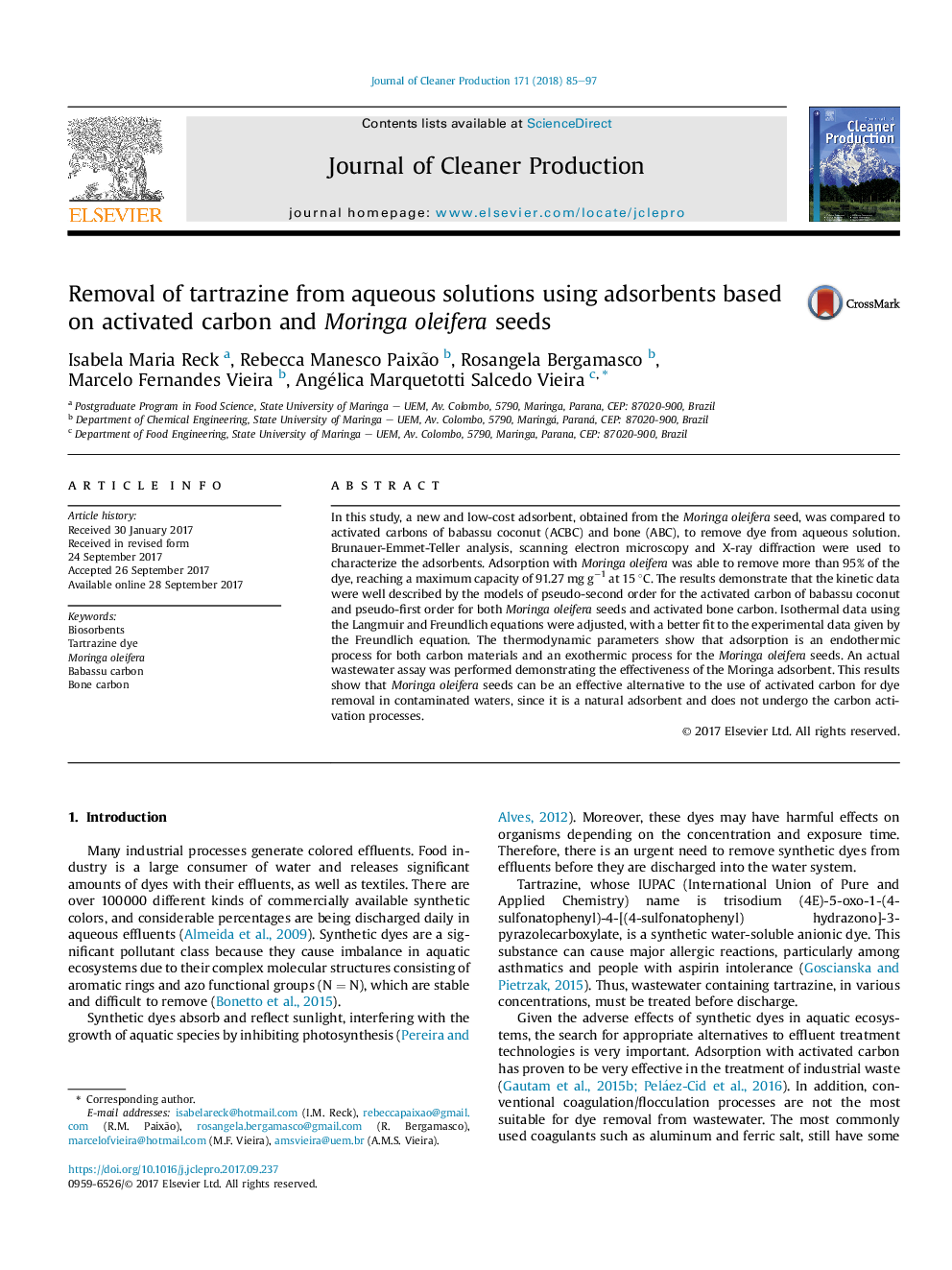| Article ID | Journal | Published Year | Pages | File Type |
|---|---|---|---|---|
| 5479150 | Journal of Cleaner Production | 2018 | 13 Pages |
Abstract
In this study, a new and low-cost adsorbent, obtained from the Moringa oleifera seed, was compared to activated carbons of babassu coconut (ACBC) and bone (ABC), to remove dye from aqueous solution. Brunauer-Emmet-Teller analysis, scanning electron microscopy and X-ray diffraction were used to characterize the adsorbents. Adsorption with Moringa oleifera was able to remove more than 95% of the dye, reaching a maximum capacity of 91.27 mg gâ1 at 15 °C. The results demonstrate that the kinetic data were well described by the models of pseudo-second order for the activated carbon of babassu coconut and pseudo-first order for both Moringa oleifera seeds and activated bone carbon. Isothermal data using the Langmuir and Freundlich equations were adjusted, with a better fit to the experimental data given by the Freundlich equation. The thermodynamic parameters show that adsorption is an endothermic process for both carbon materials and an exothermic process for the Moringa oleifera seeds. An actual wastewater assay was performed demonstrating the effectiveness of the Moringa adsorbent. This results show that Moringa oleifera seeds can be an effective alternative to the use of activated carbon for dye removal in contaminated waters, since it is a natural adsorbent and does not undergo the carbon activation processes.
Keywords
Related Topics
Physical Sciences and Engineering
Energy
Renewable Energy, Sustainability and the Environment
Authors
Isabela Maria Reck, Rebecca Manesco Paixão, Rosangela Bergamasco, Marcelo Fernandes Vieira, Angélica Marquetotti Salcedo Vieira,
